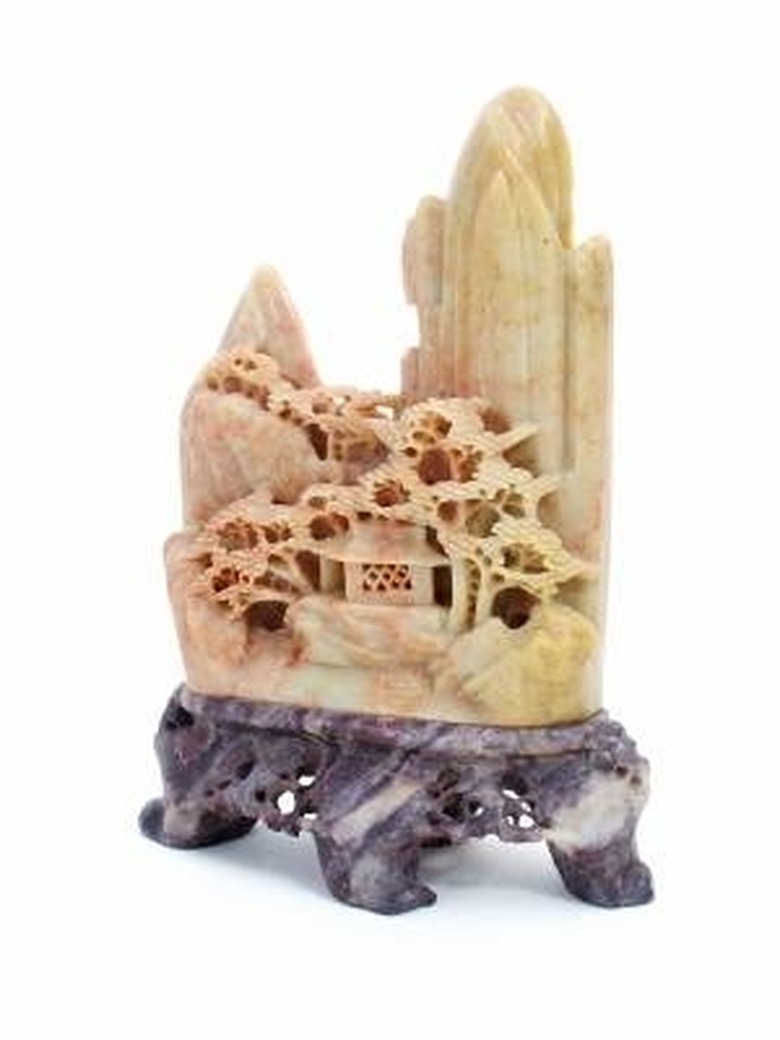Where Can Soapstone Be Found?
Soapstone, also known as steatite, can be found all over the world. Much of the soapstone seen these days comes from Brazil, China or India. Significant deposits also exist in Australia and Canada, as well as in England, Austria, France, Italy, Switzerland, Germany and the United States. Stones from different countries have different properties, but all are geologically stable, solid and not affected by humidity, therefore objects carved from soapstone last a very long time.
United States
United States
Soapstone carvings have been found in several places in the United States, both as pieces of art and useful objects. Due to its unique properties for holding heat, soapstone has been used by many cultures for cooking pots, utensils and pipes. Soapstone artifacts have been found in large quantities in Wyoming and Washington (as well as British Columbia in Canada). Quarries in Pennsylvania and Massachusetts are considered the most likely source for soapstone artifacts found on the east coast of the USA.
Contemporary uses of soapstone are often in industrial and technical areas. Although it is only one on the hardness scale, compared with 10 for diamond, it is still quite hard, combining softness with solidity. It is used in construction as an insulator and is experiencing a revival as a material for countertops. Its natural properties enhance its usefulness in the kitchen, being durable, resilient to heat, scratches and impacts. It is naturally stain resistant because it is chemically inert and therefore unaffected by both alkalies and acids.
Europe
Europe
The Romans used soapstone found near Lake Como to fashion roof tiles and drains as well as tableware and cooking pots. In ancient Greece, the islands of Naxos and Siphnos were both renowned for the production of beautifully carved objects from the soft stone, including stone seals. Small icons and crosses of soapstone have adorned churches in Bulgaria and Salonika. Vikings used soapstone as heat reflectors, a practice that continues to this day in northern Europe, where wood-burning stoves are built using blocks of soapstone, which collects and slowly releases the heat of the fire.
The Near East and Africa
The Near East and Africa
The Indus Valley has produced a wealth of soapstone carvings: beads, amulets, scarabs, small statuary, cylinder seals, vases, bowls and other utensils. Archeologists have also found thousands of steatite figures and fragments in Igbomina, Nigeria.
Asia
Asia
For thousands of years soapstone has been used in Asia for the creation of pieces of art and for cooking utensils, plates, vases, teapots or boxes. Some of the most beautiful colors are found in Asian soapstones including not only white, black and grays, but also deep purple, pink and several shades of green.
Brazil
Brazil
Brazilian soapstone often has warm spicy colors: yellow-gold, caramel, brown, yellow-green and green. Many of the largest quarries are currently found in Brazil, where large slabs can be quarried for multiple uses, including sink basins and countertops. For centuries Brazilian cooks have maintained an unbroken tradition of using soapstone for cooking pots. They can be used directly over a flame or in an oven, heat evenly and keep food hot (or cold if chilled first) for a very long time.
References
- Archaeomineralogy; George Rapp; 2009
- Soapstone Overview
Cite This Article
MLA
Swenson, Paula. "Where Can Soapstone Be Found?" sciencing.com, https://www.sciencing.com/can-soapstone-found-5375861/. 24 April 2017.
APA
Swenson, Paula. (2017, April 24). Where Can Soapstone Be Found?. sciencing.com. Retrieved from https://www.sciencing.com/can-soapstone-found-5375861/
Chicago
Swenson, Paula. Where Can Soapstone Be Found? last modified March 24, 2022. https://www.sciencing.com/can-soapstone-found-5375861/
